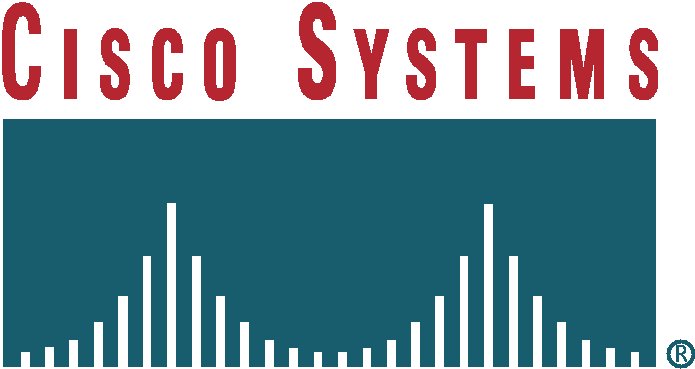Original document sent by Bert Koerts.
After my L2 cert. on ALRS1 I decided to go on for L3. The first step was coming up with a concept. Since the hobby is still very young in Europe, I decided that it was still relatively easy to make a rocket that stands out in the crowd. So I went for the opportunity to build a BIG rocket. After a round of negotiating with my wife, I made my first draft and send it to my two TAP members (Juerg Thuering & Frank De Brouwer). We discussed it elaborately and the design was changed in the finsection and the recovery section.
Finally the building process could begin. I started in September with laminating the bodytubes and worked my way up to the recovery bay. Finally in February the rocket was ready to be finished and painted, which was done by Rene van Hulst. After assembling the rocket for the first time, I was not satisfied with the couplers, so I redesigned them. This was also the time that I realised for the first time what I was going to do! Late at night I couldn’t help thinking about what could go wrong and how I could eliminate the chance of something going wrong. But after some final changes and final tests I regained my confidence in the project.
Frank was so kind to transport the 4 1.8 meter segments to Switzerland and to build a super pad – large enough for this rocket. I arrived on ALRS2 at friday evening – tried to go to bed early and tried to sleep well. It was a nice try...
At 9 I arrived at the site, finding a huge pile of rocket segments and boxes. I managed to confiscate one table and started prepping Orion. During prepping I encountered some problems but they were eventually all solved with the help of Jeroen Louwers, Wilfred van Bergen and Marinus Wisselink. Our problems included an Altacc with a loose capacitor, many holes that should be big enough of 4 wires but weren’t etc. etc.
In the meantime two additional stressfactors were bothering me, one was a television crew which was making many close-ups and asking difficult questions while I was doing something critical and the other one was the wind that I could feel picking up… I managed to make a deal with the TV crew and I could press on.
This prepping period was not very relaxed, so I’ll need to prepare this better. I distinctly remember arming my RDAS. I heard a high beep but was wondering what I should hear. (Forgot the manual) So I asked another member (which shall remain nameless): “What sound does an RDAS make when all is right?”
“A low slow beep of course!” He answered.
“But my RDAS makes a high beeping sound” I said – getting desperate
“Oh Yes – that’s what I mean!! A high beeping sound” AAAARRRGHHH!!
When the rocket was prepped I took it out to the pad. That was wonderful – hearing all oohs and aaahs! When the rocket was finally on the pad, I realised we were surrounded by an army of photographers and TV-crews… I felt just like a moviestar!
I remember waiting for a lull, and the countdown. Than the motor ignited and lifted off – very slow, just like a real rocket! You could hear the motor do its work for a long time. At apogee we could see the nosecone come off and the drogue chute deploy. But a few seconds later the main chute deployed too, about 500 meters to high. Argh, that WAS my L3 attempt. A few members helped retrieve the rocket, which was in excellent shape.
It took me a while longer to come down to earth. For me it was a very adventurous day which I’m not likely to forget. I really learned a lot and saw (well, you can’t expect ME to be objective) the most beautiful launch I’ve ever seen. I also really liked that all other rocketeers were prepared to help me, before and on the launch.
I made Juerg promise to arrange for a Redline reload for my 98-7680 casing. So I’ll be back at ALRS3. But not with the biggest rocket however; I already heard rumours of Dany building a 6 meter Mosquito !!
I mentioned that a lot of people helped me. Also our new rocketry companies (Spacetec, RebelRocketry, AED and Cavemanrocketry) went out of their way to make this happen. Last but not least I’d like to thank all volunteers who make a big effort to organise rocketlaunches and to make HPR possible in Europe. Thanks!
Bert Koerts
This email address is being protected from spambots. You need JavaScript enabled to view it.
Tra 6717, Safety Coordinator Tripoli The Netherlands
The planning, building and – in time – the analysis of the flight of Orion can be seen at Tripoli NL.


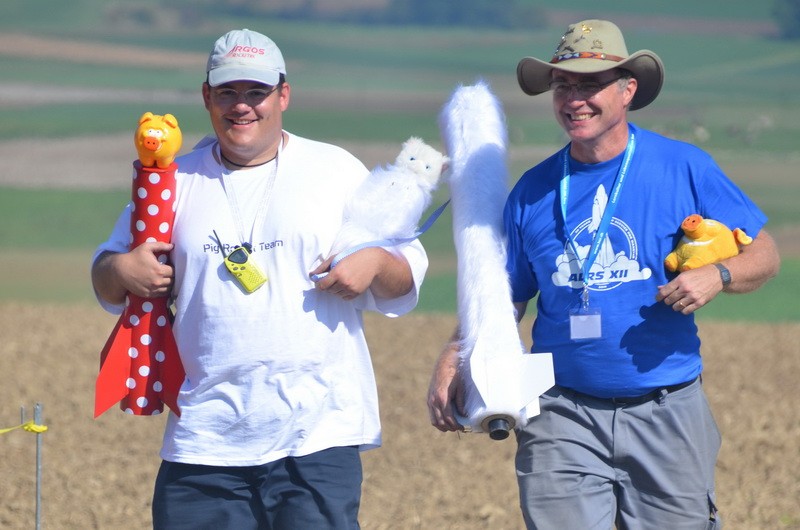
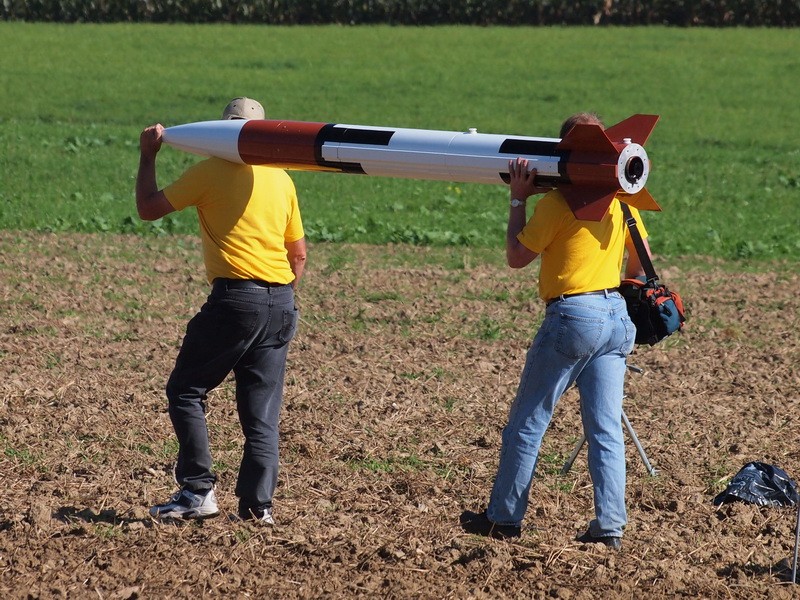
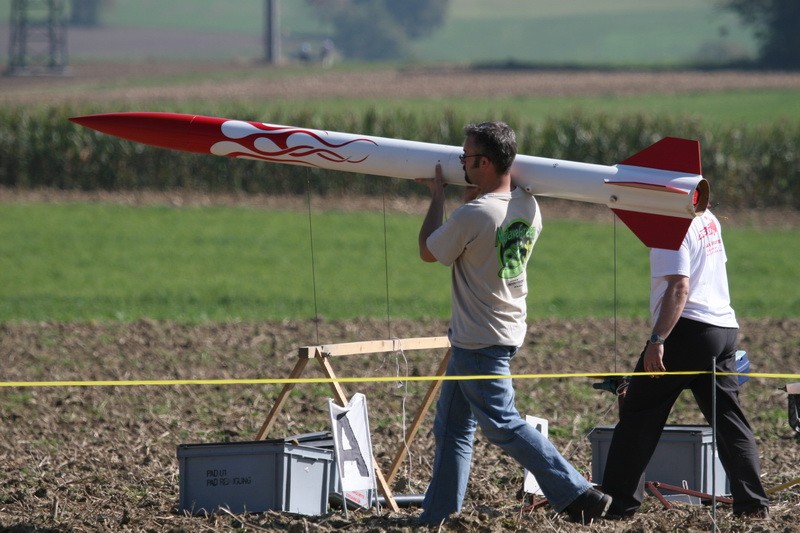
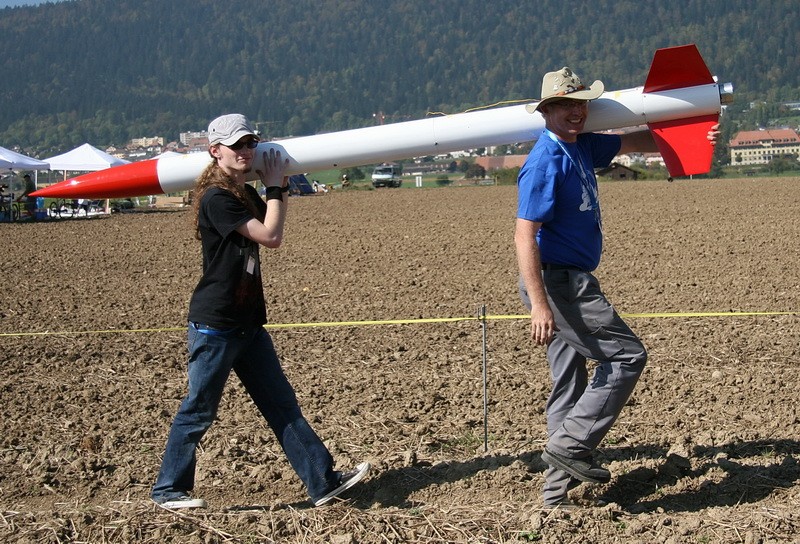

 Black Brant Höhenforschungsraketen
Black Brant Höhenforschungsraketen


